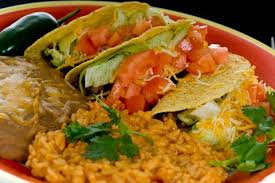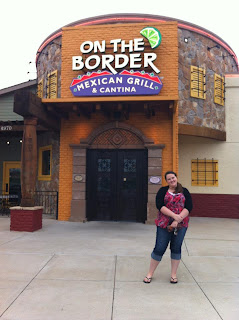Multicultural Assignment EDBE3480
Monday, April 23, 2012
Where are we?
Hillary and I decided to venture into this little meat market in Denton. Everything was in Spanish and they had a very impressive selection of meats in the back of the store. After walking around for a while we got these Spanish brand Popsicle. I got strawberry and Hillary got cookies-n-cream.
Monday, April 16, 2012
Friday, April 13, 2012
adventure...
Today a few of my EDBE classmates and I are heading out to Dallas to visit the LCC (Latino Cultural Center). Hopefully we get some good pictures and I will get back to y'all soon...
till then,
-Emily
till then,
-Emily
Friday, April 6, 2012
Saturday, March 24, 2012
A little research...
What exactly defines the Hispanic culture you ask?

I found a great website to help us understand their culture...
Over the past 30 years, the Hispanic population has exhibited tremendous growth in the United States. Hispanics comprise about 11% of the U.S. population, including 3.6 million residing in the Commonwealth of Puerto Rico. Approximately 31 million individuals are identified as Hispanics. The U.S. Hispanic population is projected to become the largest minority group by the year 2006.
Family Values
Traditionally, the Hispanic family is a close-knit group and the most important social unit. The term familia usually goes beyond the nuclear family. The Hispanic "family unit" includes not only parents and children but also extended family. In most Hispanic families, the father is the head of the family, and the mother is responsible for the home.
Hispanic families instill in their children the importance of honor, good manners, and respect for authority and the elderly. Preserving the Spanish language within the family is a common practice in most Hispanic homes.
Rituals and Religions
In the Hispanic world, religion has traditionally played a significant role in daily activity. More than 90% of the Spanish-speaking world is Roman Catholic. Each local community celebrates its patron saint's day with greater importance and ceremony than individuals do for personal birthdays.
Celebrations and Holidays
Hispanic countries celebrate the more popular international holidays, notably Easter, Christmas Eve, Christmas, New Year's Day, and the Three Kings' Day. In addition, each country celebrates its El Dia de Independencia. Most holidays are centered on or have their origins in religion. Many celebrations of the Catholic Church are officially designated by the government as holidays.
Eating Habits
In Hispanic countries, a light meal is served for breakfast. Lunch, referred as el almuerzo, usually is the main meal of the day for Spanish-speakers. In some countries, it is customary for adult family members and children to come home from work or school for about two hours to be together for this meal. In the early evening, la merienda, a light snack of coffee and rolls or sandwiches, is served. This meal is often very informal and may be just for children. In the evening, often as late as 9:00 p.m., la cena, a small supper, concludes the day's meals. Once settled in the United States, most Hispanics adopt the three-meal system.

Teaching and Learning Implications
To fully engage Hispanic audiences in the learning process, particular attention should be given to gaining and maintaining trust. Greater acceptance of educational efforts will occur by learners if Hispanic community leaders are involved in the planning, delivery, and evaluation of these educational efforts. Be aware that the physical distance between Hispanics when holding a conversation is much closer than in other cultures.
Ref:
Clutter, Ann W. "Ohio State University Fact Sheet." Understanding the Hispanic Culture, HYG-5237-00. Ohio State University. Web. 23 Apr. 2012. <http://ohioline.osu.edu/hyg-fact/5000/5237.html>.
I found a great website to help us understand their culture...
Over the past 30 years, the Hispanic population has exhibited tremendous growth in the United States. Hispanics comprise about 11% of the U.S. population, including 3.6 million residing in the Commonwealth of Puerto Rico. Approximately 31 million individuals are identified as Hispanics. The U.S. Hispanic population is projected to become the largest minority group by the year 2006.
Family Values
Traditionally, the Hispanic family is a close-knit group and the most important social unit. The term familia usually goes beyond the nuclear family. The Hispanic "family unit" includes not only parents and children but also extended family. In most Hispanic families, the father is the head of the family, and the mother is responsible for the home.
Hispanic families instill in their children the importance of honor, good manners, and respect for authority and the elderly. Preserving the Spanish language within the family is a common practice in most Hispanic homes.
Rituals and Religions
In the Hispanic world, religion has traditionally played a significant role in daily activity. More than 90% of the Spanish-speaking world is Roman Catholic. Each local community celebrates its patron saint's day with greater importance and ceremony than individuals do for personal birthdays.
Celebrations and Holidays
Hispanic countries celebrate the more popular international holidays, notably Easter, Christmas Eve, Christmas, New Year's Day, and the Three Kings' Day. In addition, each country celebrates its El Dia de Independencia. Most holidays are centered on or have their origins in religion. Many celebrations of the Catholic Church are officially designated by the government as holidays.
Eating Habits
In Hispanic countries, a light meal is served for breakfast. Lunch, referred as el almuerzo, usually is the main meal of the day for Spanish-speakers. In some countries, it is customary for adult family members and children to come home from work or school for about two hours to be together for this meal. In the early evening, la merienda, a light snack of coffee and rolls or sandwiches, is served. This meal is often very informal and may be just for children. In the evening, often as late as 9:00 p.m., la cena, a small supper, concludes the day's meals. Once settled in the United States, most Hispanics adopt the three-meal system.
Teaching and Learning Implications
To fully engage Hispanic audiences in the learning process, particular attention should be given to gaining and maintaining trust. Greater acceptance of educational efforts will occur by learners if Hispanic community leaders are involved in the planning, delivery, and evaluation of these educational efforts. Be aware that the physical distance between Hispanics when holding a conversation is much closer than in other cultures.
Ref:
Clutter, Ann W. "Ohio State University Fact Sheet." Understanding the Hispanic Culture, HYG-5237-00. Ohio State University. Web. 23 Apr. 2012. <http://ohioline.osu.edu/hyg-fact/5000/5237.html>.
Monday, February 27, 2012
Soccer...in SPANISH?
So whats better than watching a little TV on Sunday? According to a friend of mine, Oscar...watching Soccer on Telemundo in Spanish...Who knows what they were saying but i learned how to say GOALLLLLLLLL for a really REALLY long time :)
Sunday, February 5, 2012
Intro and topic
Hey everyone! My name is Emily and I have decided to study into the Hispanic culture for my multicultural experience assignment. The Hispanic Culture interests me because where I am from, Texas, the population of Hispanic families is great. I feel that I would benefit from knowing more about their lifestyle and culture. I will posting about my different experiences here soon, so check back and see all the exciting things this culture has in store for both myself and you, the viewers.
Until next time,
-Emily

Until next time,
-Emily

Subscribe to:
Posts (Atom)













